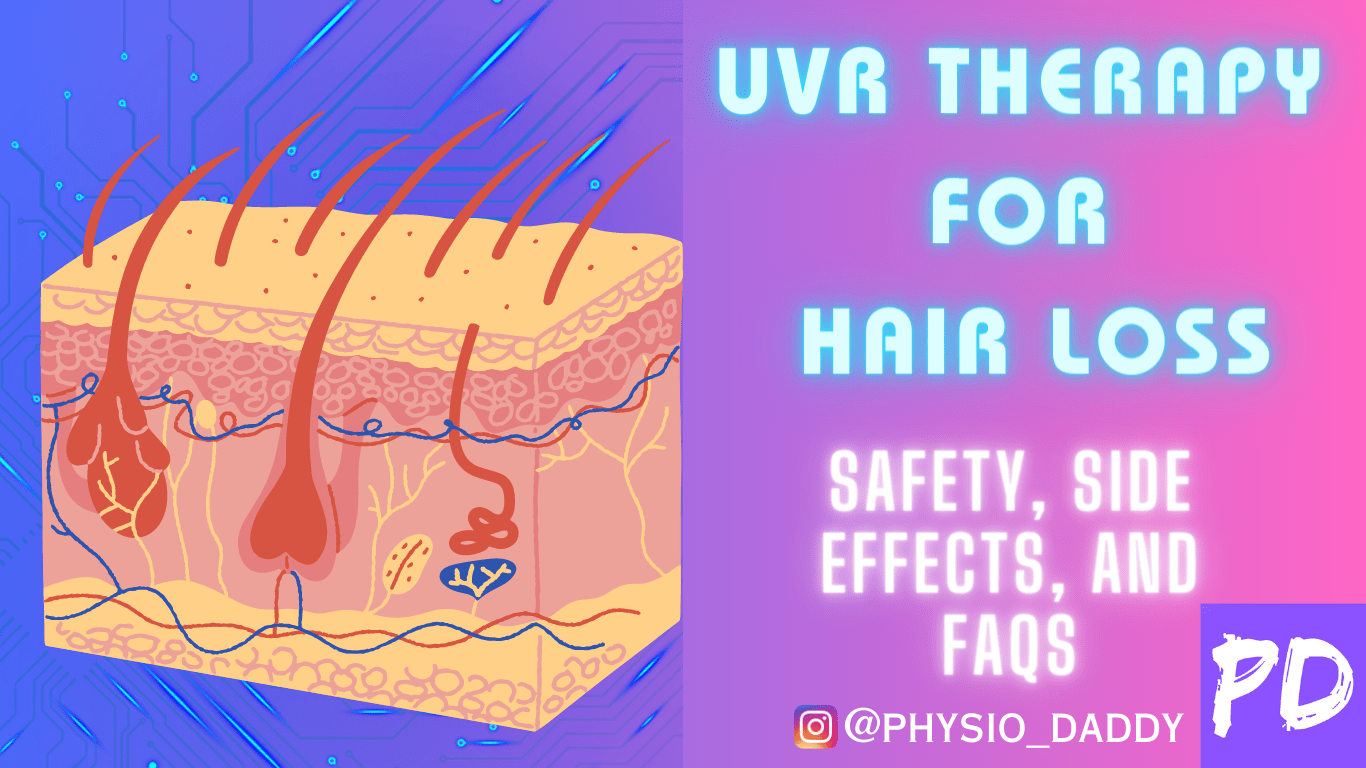Experiencing hair loss can be really upsetting and it happens to both men and women all over the world. Luckily, there are different ways to treat it, and one of the promising options is Ultraviolet Radiation (UVR) Therapy.
Don’t worry, in this blog post, we will explain everything about UVR therapy, how well it works, and any possible side effects it might have. We’ll also answer some common questions that you may have, so you can feel confident and knowledgeable before deciding if this innovative treatment is right for you.
So, let’s get started and shed some light on UVR Therapy for hair loss!
What is UVR Therapy?
UVR Therapy is a special treatment for hair loss, which you might also hear being called Ultraviolet Light Therapy or Phototherapy. The way it works is quite interesting! During this therapy, the scalp is exposed to specific types of ultraviolet light in a very controlled manner.
The main goal of this treatment is to help the hair grow back. How does it do that? Well, it’s like giving a gentle boost to the hair follicles by improving the blood flow to them, making the cells regenerate faster, and reducing any swelling or irritation that might be causing hair loss.
The best part is that UVR Therapy is non-invasive, which means it doesn’t involve any surgeries or cutting the skin, and it’s also drug-free, so you won’t have to worry about taking any pills or medications. It’s a choice many people consider when they are facing hair loss and looking for a natural and safe way to encourage hair growth.
Benefits of UVR Therapy
UVR Therapy is a treatment that might not work the same way for everyone, and that’s okay because people’s bodies are different.
But don’t worry, there’s some good news! Researchers have found that in specific situations, UVR Therapy can be really helpful in treating a condition called androgenetic alopecia, which is also known as male or female pattern baldness.
So, for some folks dealing with this particular type of hair loss, UVR Therapy could be a ray of hope. However, it’s essential to know that not everyone will respond the same way, and it might not be as effective for other types of hair loss.
But hey, every person is unique, and there are still other treatments to explore with the help of your healthcare provider!
Safety and Side Effects
UVR Therapy is usually safe when done by a trained professional who knows what they’re doing. But, like any medical stuff, there are things to be careful about.
Sometimes, people may get skin redness, irritation, or feel more sensitive after the treatment. Also, if you get too much UVR exposure for a long time, it might raise the risk of skin cancer.
That’s why it’s super important to have a qualified dermatologist or a hair loss specialist take care of you during UVR Therapy. They know how to do it right and will make sure it’s safe for you.
So, if you’re thinking about trying UVR Therapy, always talk to an expert first!
FAQs
Is UVR Therapy Painful?
UVR Therapy is typically painless. Patients might experience a mild warming sensation on the scalp during treatment, but it should not be uncomfortable.
How long does each UVR Therapy session take?
The duration of each UVR Therapy session may vary, but it usually lasts between 15 to 30 minutes. The frequency and number of sessions will depend on the individual’s condition and the treatment plan recommended by the healthcare professional.
Are there any age restrictions for UVR Therapy?
UVR Therapy can be used by individuals of different ages, but it’s essential to consult a healthcare professional to determine its suitability for your specific case.
Can UVR Therapy be combined with other hair loss treatments?
UVR Therapy can be used in combination with other hair loss treatments, such as topical medications or hair transplant procedures. However, it’s essential to discuss potential interactions and outcomes with your healthcare provider
Conclusion
UVR Therapy offers a promising approach to treating hair loss, particularly for androgenetic alopecia. While it may not be a guaranteed solution for everyone, it is worth considering as part of an overall hair loss treatment plan. Before undergoing UVR Therapy, consult with a qualified healthcare professional to ensure it aligns with your individual needs and medical history. Remember, no treatment should be pursued without proper medical guidance. With this knowledge, you can take a step towards exploring a potential path to regaining your hair and confidence.


